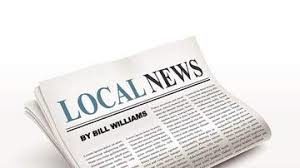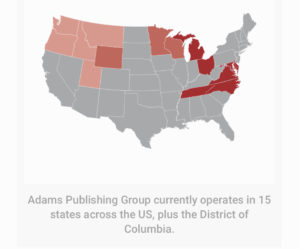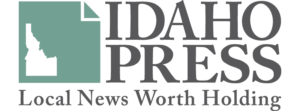Local Newspapers
Local journalism needs us.
April 6, 2020‘Journalism faces an extinction event.’ If you value democracy, please buy a paper today or subscribe to a news organisation. We are an industry that has been battling for years but COVID-19 is an existential threat to independent journalism everywhere.’
-Carole Cadwalladr, The Guardian & The Observer
Facing a possible “extinction event” for independent media worldwide, journalists must work together globally to combat a triple threat of disinformation, government restrictions and economic calamity worsened by the COVID-19 pandemic, three top editors said during an ICFJ webinar Friday.
Maria Ressa, the founder of Rappler in the Philippines, said that although her outlet is in a comparatively secure financial position, many other news organizations globally are at risk of collapse. And the result could be that many citizens might not be able to count on independent media to continue to provide factual information free of government control once the shock waves of the pandemic have subsided.
-The International Center for Journalists (ICFJ)
The Sandpoint Reader in Sandpoint, Idaho, was forced to lay off most of its staff after it lost advertising revenue due to the COVID-19 pandemic.
The Mountain West News Bureau
Newspapers Face Existential Question: How To Cover The Pandemic When There’s No Money?
By Nate Hegyi
Ben Olson is exhausted.
‘Olson appears close to burning out, trying to keep his readers up-to-date with the latest COVID-19 news. The region has dozens of confirmed cases and, like the rest of the country, that number is growing. But at the same time, the number of reporters and staff at the Reader has shrunk – from four down to just one: Olson.
“I want to get my staff back to work because, number one, they’re like my family and I feel responsible for them,” he says. “But number two – I just cannot handle this by myself.”
Olson had to lay off his staff after local restaurants and bars shut down in an effort to curb the spread of COVID-19. Those businesses often advertised events in the Sandpoint Reader’scalendar. But no events mean no money.
“I realized very quickly that I would probably make one or possibly two more payroll cycles and then I would be completely bankrupt,” he says.
It’s a problem that’s reverberating throughout the Mountain West’s media landscape. The COVID-19 pandemic is deepening the cracks and fissures in a centuries-old business model, one that traditional newspapers and alternative weeklies still rely on.
There are no journalists without robust advertising dollars to pay for them, and money from subscription and circulation revenues can only go so far – they often cover less than half of a newspaper’s expenses.
So, from the Sandpoint Reader to the Bozeman Daily Chronicle and Missoulian in Mont., to the Buffalo Bulletin in Wyo. and Westword in Denver, media companies are cutting hours and laying off staff.
“This is a real disaster for media that are supported by advertising in general,” says Ben Smith, a media columnist for the New York Times who recently wrote an op-ed titled “Bail Out Journalists. Let Newspaper Chains Die.”
He points out that many traditional newspaper chains were on life support before the pandemic – they’ve been cutting costs by shutting down papers and laying off staff. COVID-19 just sped up the clock and Smith doesn’t expect a happy ending.
“I think we’re going to wind up with fewer journalists next year than this year, just as it has been for the past several years,” he says.
“I think there is an increasing recognition that journalism is a public service,” he says. “It’s a utility like water or electricity, in terms of keeping a community going and is an appropriate outlet for philanthropy.”
It’s a business model that has been adopted by an increasing number of news outlets across the Mountain West. Late last year, The Salt Lake Tribune became the first legacy newspaper to transform itself into a nonprofit organization. Montana Free Press embraced the nonprofit model when it launched a few years ago.
“Most of our revenue comes from members who donate to us like they would to public radio,” says John S. Adams, editor-in-chief of Montana Free Press.
Currently the outlet is doing well financially, he says. They’ve seen skyrocketing readership and an uptick in donations during the pandemic.
This story was produced by the Mountain West News Bureau, a collaboration between Wyoming Public Media, Boise State Public Radio in Idaho, KUNR in Nevada, the O’Connor Center for the Rocky Mountain West in Montana, KUNC in Colorado, KUNM in New Mexico and with support from affiliate stations across the region. Funding for the Mountain West News Bureau is provided in part by the Corporation for Public Broadcasting.
PBS/Journalism Deserts
December 16, 2019The danger of losing local news.
Over the last 15 years, local newspapers across the U.S. have lost more than $35 billion in advertising revenue and half of their staffs, while at least 2,000 news outlets have shuttered during that time, according to a new study by the non-profit PEN America. Viktorya Vilk, who co-authored the report, joins Hari Sreenivasan to discuss how the decline of local news is impacting civic engagement.
Adams Publishing & “Hyper-Local News”
February 12, 2019Poynter:
“Who are the Adams family, and why are they buying newspapers by the dozen? Barely three years old, Minneapolis-based Adams has assembled a group of more than 100 small dailies, weeklies and shoppers in at least 15 separate transactions. In contrast to other big consolidators, they often leave existing management in place, do not impose cookie-cutter content templates, and do not start by stripping down newsrooms of editors and reporters. The bare-bones Adams Publishing website lists no main office executives or a phone number. Press releases about the series of acquisitions do not list an Adams contact. Estimates put the family’s net worth north of a billion dollars. In 2005, Steve Adams and his wife donated $100 million to the Yale School of Music. Minneapolis Star Tribune publisher Mike Klingensmith told me he had never heard of any of them until Adams Publishing began buying suburban weeklies in a ring around the Minneapolis metro in 2016.
The attraction of newspapers? Adams mentions that they are out of favor and available at “low valuation multiples.” Local brands and exclusive local content have a bright future, Adams said. (His presentation makes no mention of digital, and the company’s website is illustrated with a stack of newspapers).
In talking to the Inland group, Mark let drop that his is a “third-generation media family.” His grandfather, Cedric Adams, was a big local celebrity when I was growing up in Minneapolis with a popular radio show, a column in the Minneapolis Star and a lucrative sideline voicing national TV and radio ads.”
2.10.19
“Adams Publishing Group is launching a new Idaho newspaper in Bingham County, 5-days-per-week, Tuesday-Friday & Sunday. The Bingham County Chronicle will serve Aberdeen, Shelley, Firth, Fort Hall, Blackfoot and other towns, focusing on ‘hyper-local’ news. The announcement comes as many newspapers across the country have folded. But the downward trend in the news media economy is affecting organizations in larger markets more than community newspapers, said Eric Johnston, Adams Publishing Group’s west division president.”
~
‘Adams has raised funds for Republican Party candidates. He reportedly contributed over $1 (m) dollars of billboard advertising (through his Adams Outdoor Advertising business) to support Georg W. Bush’s 2000 presidential campaign [wikipedia].’ https://adamspg.com
The study found, “The conventional wisdom is that news consumers want increasingly short, quickly digestible content. While this may be true in some contexts, our panel survey respondents offered a more complex picture of audience preferences on the spectrum of efficiency to depth. Indeed, asked to describe what their ideal local news program would look like, respondents fairly consistently chose depth over efficiency.”
The study included viewers with an average age of 34 from six TV markets.
-
WLS in Chicago (market No. 3)
-
KNXV in Phoenix (market No. 12)
-
WBTV in Charlotte, North Carolina (market No. 23)
-
WTVD in Raleigh/Durham, North Carolina (market No. 25)
-
WJAR in Providence, Rhode Island (market No. 53)
-
WAFB in Baton Rouge, Louisiana (market No. 97)
In most cases, the most emotional parts of the stories were moved higher in the pieces and the remixed stories included more context than the originals.
The survey tested a story from WLS-Chicago about the Facebook data breach. The original story included soundbites with the state attorney general. The remix included some soundbites with two “Facebook users” who didn’t add any new information but did add some emotion to the story. The remix also added moving graphics and a sort of “splat” sound on maps that — while it would make a lot of newspeople’s skin crawl — didn’t turn off the viewers the researchers head from.



